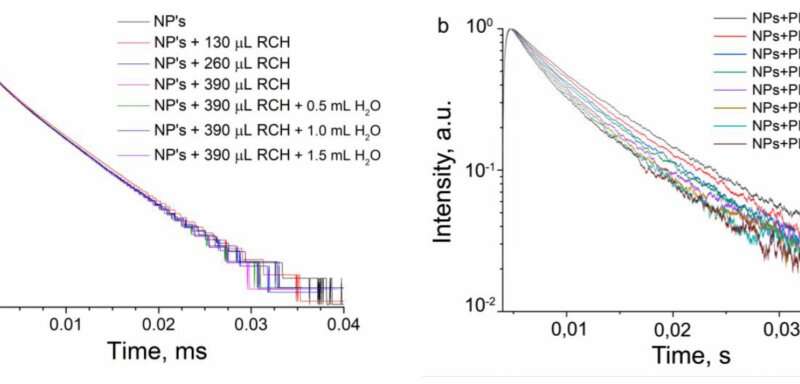Promising material for hybrid photodynamic cancer therapy studied at Kazan Federal University

A paper the Institute of Physics and the Institute of Fundamental Medicine and Biology saw light in Journal of Composites Science.
"Photodynamic therapy is a modern trend in the treatment of oncological diseases. It is based on the use of light-sensitive substances, photosensitizers, and light of a certain wavelength. For this therapy, photosensitizers capable of generating reactive oxygen species when exposed to visible light are delivered to the tumor. Activation of the photosensitizers causes the tumor to die. Visible light can penetrate into the tissue to a depth of not more than one centimeter, so the use of photodynamic therapy is limited to cancerous formations close to the skin surface," says Associate Professor Alexey Nizamutdinov.
He noted that ionizing radiation (e.g., X-rays) has no such physical limitations, but it cannot directly activate photosensitizers.
"To overcome this limitation, photosensitizers can be conjugated (combined) with nanoparticles capable of converting ionizing radiation into visible light. Photodynamic therapy using ionizing radiation (also called hybrid radio-photodynamic therapy) can have an additional therapeutic effect during radiotherapy sessions. The complexes consisting of a nanoparticle and photosensitizer are expected to circulate longer in the bloodstream and accumulate more effectively in the tumor compared to organic photosensitizers", he adds.
Experiments showed that CeF3 nanoparticles with Y3+ and Tb3+ ions added together with the Russian clinically approved photosensitizer Radachlorin are able to generate reactive oxygen species under short-wave radiation that is not absorbed by the photosensitizer molecule. The most effective way to obtain such complexes was also determined.
"In vitro experiments showed that the complexes we study are actively absorbed by eukaryotic cells and demonstrate low cytotoxicity in the absence of radiation," explains Senior Research Associate Maksim Pudovkin.
According to the researchers, they plan to test the obtained complexes on various cell cultures using diagnostic and therapeutic sources of ionizing radiation.
More information:
CeF3-YF3-TbF3 Nanoparticle-Polymer–"Radachlorin" Conjugates for Combined Photodynamic Therapy: Synthesis, Characterization, and Biological Activity
www.mdpi.com/2504-477X/7/6/255
Provided by Kazan Federal University